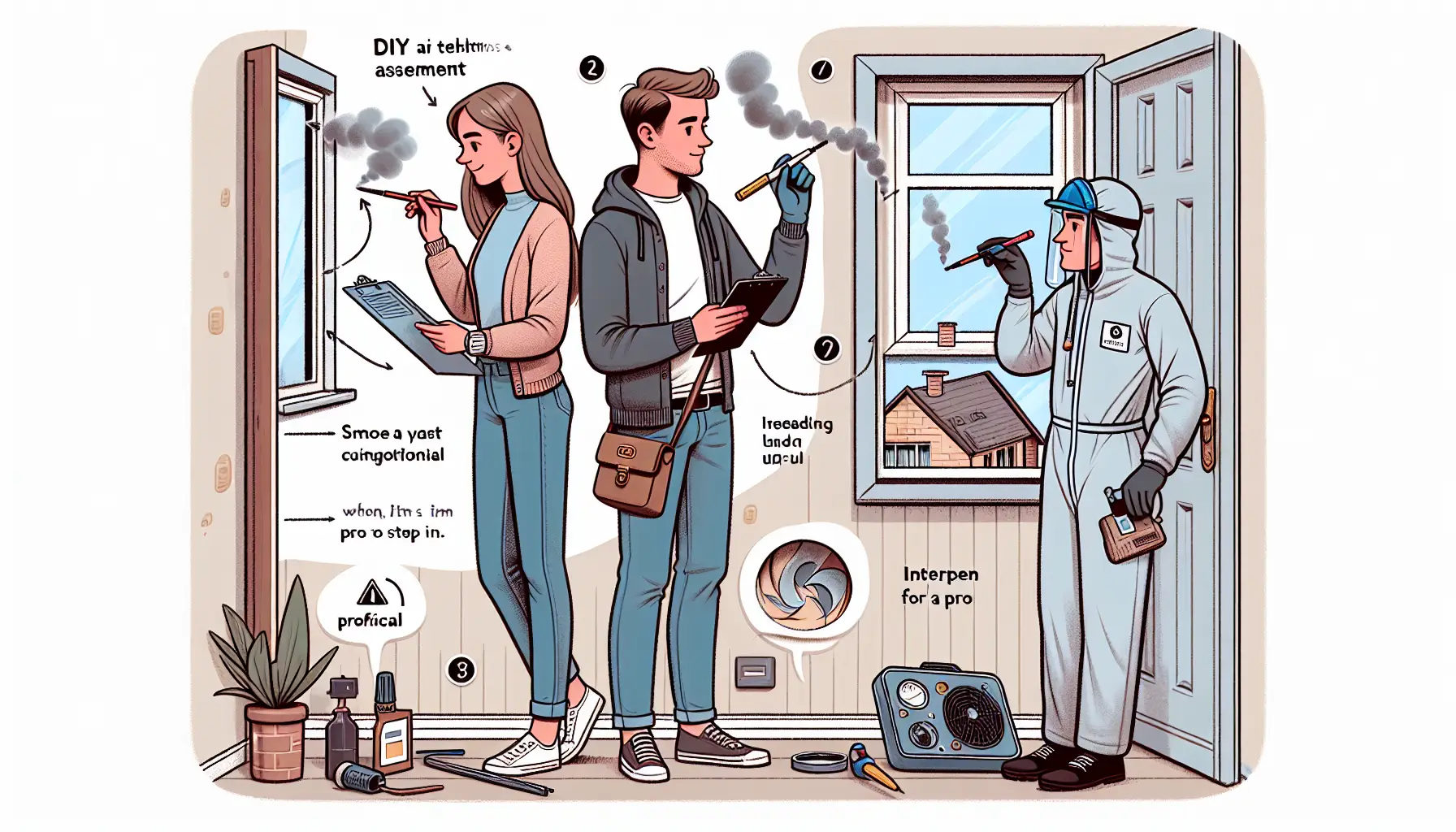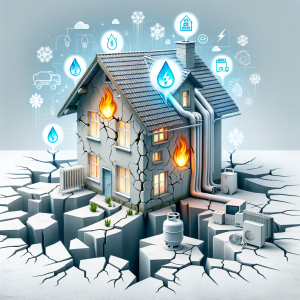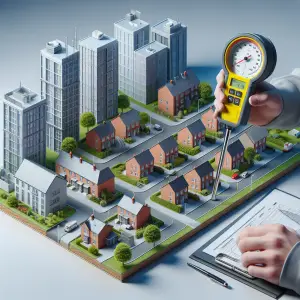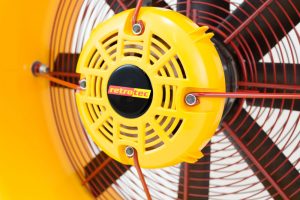Conducting a DIY Air Tightness Assessment
Ensuring your home or building is airtight plays a crucial role in achieving energy efficiency, maintaining indoor air quality, and complying with building regulations. However, while professional air tightness tests are the gold standard for accuracy and compliance, you can start your journey with a DIY air tightness assessment. This approach allows property owners to quickly identify and resolve some common air leakage issues, often resulting in improved energy performance and comfort. This guide will walk you through a basic DIY air tightness assessment and highlight when it might be time to call in the professionals, such as those from Ratio Seven.
Preparation
Before beginning your DIY assessment, it’s essential to ensure your building is as complete as possible. This means having walls, windows, skirting, lighting, switches, and doors installed. Temporarily seal any passive ventilation systems, and ensure all exterior openings are closed. This preparation will allow for a more effective and realistic assessment of your property’s airtightness.
Identifying Potential Leakages
Air leakage can stem from various sources, both apparent and hidden. These areas include:
- Windows and Doors: These are common culprits for air leakage, especially if seals are not fully engaged. Make sure all windows and doors are securely locked to engage their seals fully.
- Flues and Vents: Often overlooked, flues and vents can be significant sources of air infiltration, particularly if they are not adequately sealed.
- Hidden Areas: Don’t forget non-return valves in pipes, such as Durgo valves, and waterless traps like Hep20 traps, which can permit air movement during pressure changes.
- Ventilation Systems: Seal any intake and exhaust ductwork related to the ventilation system to prevent air from escaping or entering uncontrollably.
Basic Testing Method
A full air tightness test typically involves a blower door test, which needs special equipment. However, there are more straightforward methods you can use:
- Smoke Tools: Use a lit candle or incense stick. Slowly move the flame or smoke stick around potential problem areas to see if there is noticeable movement, indicating air leakage.
- Temporary Door Seals: Creating a temporary seal around a doorway with a frame and membrane can simulate a pressure situation, although not as accurately as professional door tests.
Steps for a Basic DIY Test
- Seal the Building: Ensure all passive ventilation is temporarily sealed and that all exterior openings are closed.
- Pressurise the Building: Use a standard fan on a low setting to achieve minimal building pressure. While this won’t reach the 50 pascals needed for official tests, it can still help highlight major leaks.
- Detect Leaks: Use candles or incense sticks to find air moving in or out of the building. Pay particular attention to windows, doors, flues, and vents.
- Address Leaks: Once you’ve identified the leaks, use materials like caulk or weatherstripping to seal those areas effectively.
When to Call the Professionals
A DIY assessment is beneficial for preliminary inspection. However, in several situations, contacting professional air tightness testers, like Ratio Seven, is advisable.
- Compliance with Building Regulations: The UK mandates air tightness testing for new constructions to ensure buildings meet energy efficiency and air quality standards. Professional services are necessary for compliance.
- Accuracy and Certification: Professionals use calibrated and certified blower door equipment for precise measurements. This accuracy is essential for meeting building standards and obtaining required certifications.
- Complex Buildings: Large or intricately designed buildings may require multiple blower door fans and a detailed setup. Professionals possess the expertise and equipment to manage these scenarios efficiently.
- Detailed Analysis: Conducting a professional test early in construction or retrofitting can identify air leakage issues before they escalate, saving time and money on future repairs. Professionals provide comprehensive data analysis crucial for optimising HVAC systems and energy calculations.
Importance of Professional Testing
Engaging with professional testers like Ratio Seven provides numerous benefits, such as:
- Comprehensive Testing and Services: Ratio Seven offers air tightness testing in line with the Independent Airtightness Testing Scheme (iATS), alongside SAP calculations for energy efficiency compliance. Their expertise covers on-site design reviews and urgent testing solutions.
- Advanced Expertise: With more than two decades of experience, Ratio Seven’s team ensures that air tightness assessments are thorough, and compliant with current regulations while providing support throughout the building process.
- Enhanced Energy Efficiency: Professional tests not only fulfil legal requirements but also aid in managing moisture, reducing condensation, and maintaining structural integrity, all contributing to improved health and comfort for building occupants.

FAQs
Why is air tightness testing important?
Air tightness testing is crucial for identifying and addressing air leakage areas that compromise energy efficiency, indoor air quality, and building integrity. It also plays a vital role in adhering to building regulations, ensuring that structures meet specific energy performance standards.
What are the limitations of a DIY air tightness assessment?
A DIY assessment is limited by its inability to achieve precise measurements and cannot fulfil building regulation requirements. Without professional equipment and expertise, some small and less obvious air leaks might remain undetected, potentially impacting long-term energy efficiency and indoor comfort.
When should I consider a professional air tightness test?
Calling in professionals is necessary when you need to comply with legal standards, obtain detailed leakage data for designing or enhancing HVAC systems, or address air leakage in complex or large buildings. Their ability to provide accurate, certified results is invaluable for both new constructions and older buildings undergoing retrofits.
DIY air tightness assessment?
While a DIY air tightness assessment can catch some apparent air leakage issues and serve as a great starting point, it often requires professional intervention to achieve exact measurements, compliance, and detailed analysis. Professionals like those at Ratio Seven can ensure thorough testing, offering peace of mind and improving a building’s energy efficiency and comfort.
Whether you’re embarking on a new construction project or retrofitting an existing property, professional support is pivotal in maintaining high standards and safeguarding both structural and occupant health.




